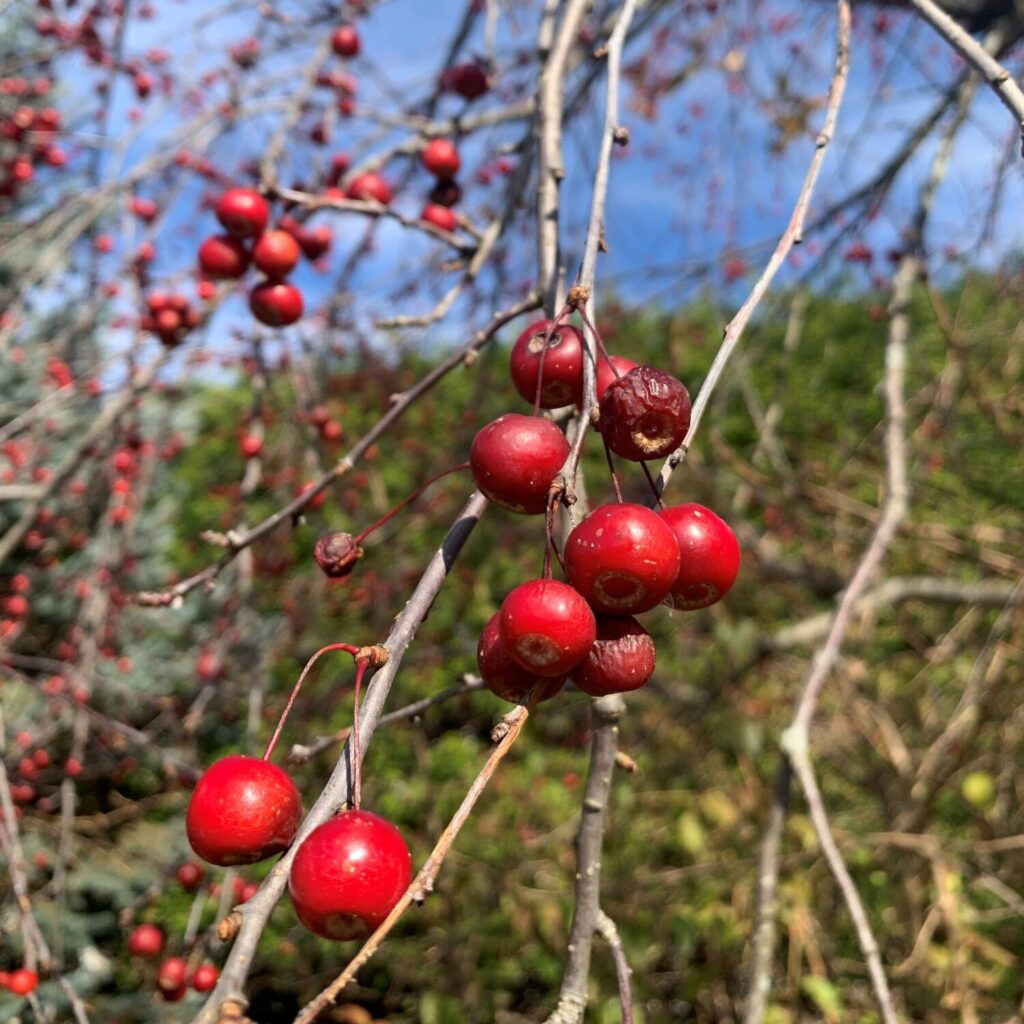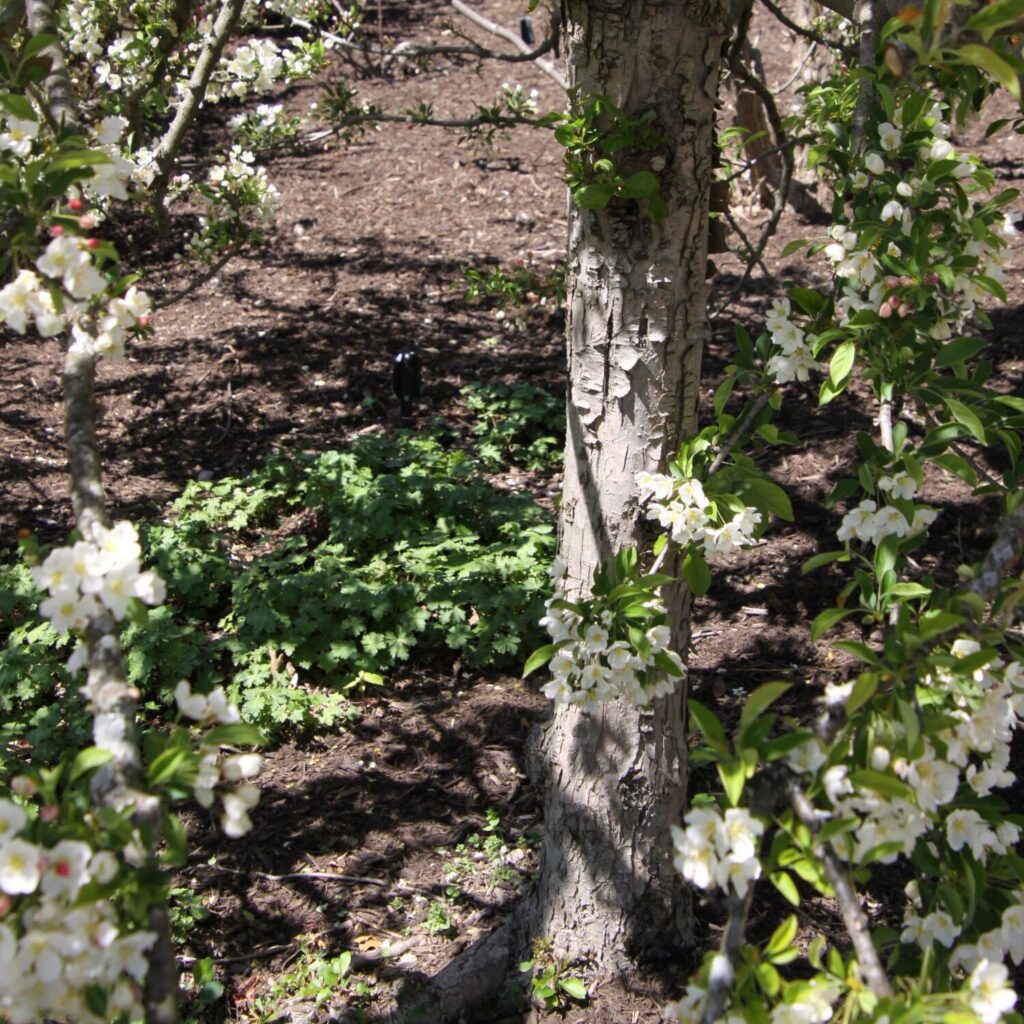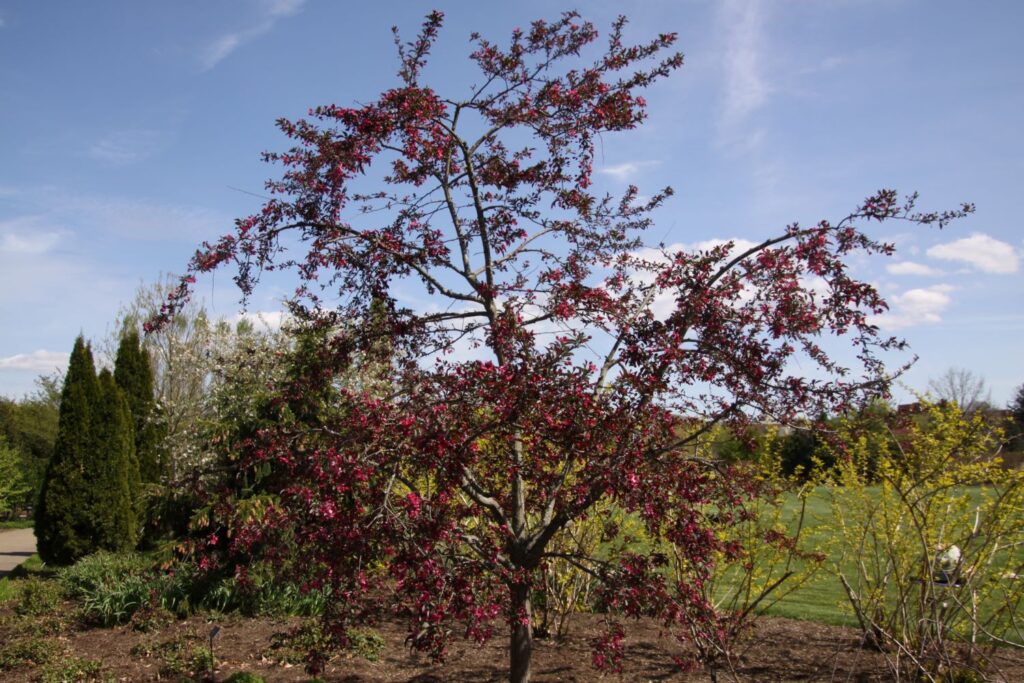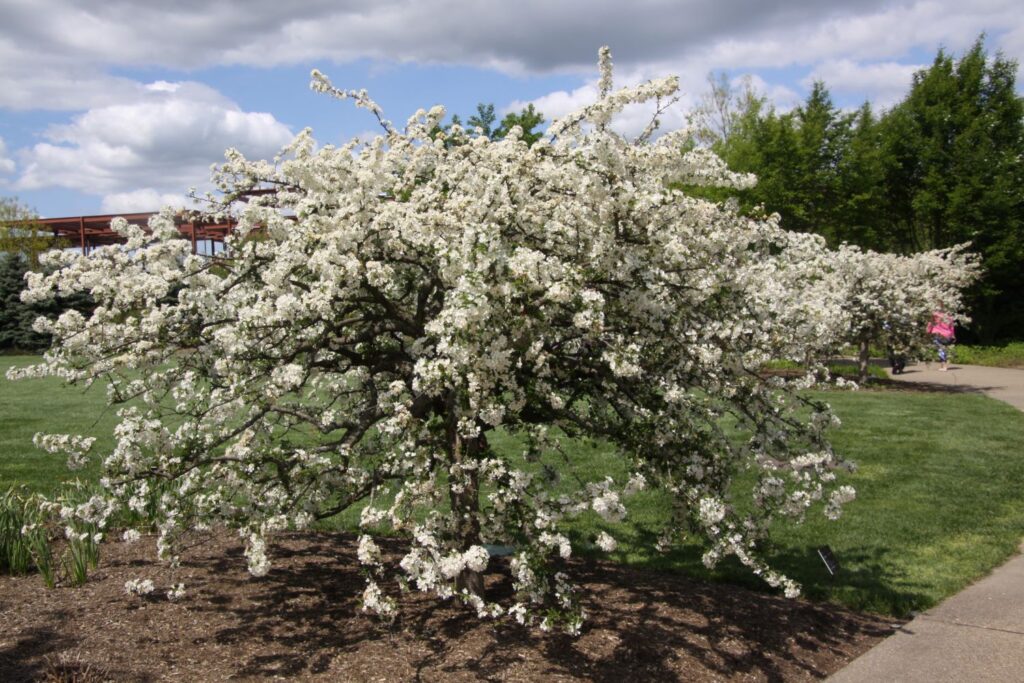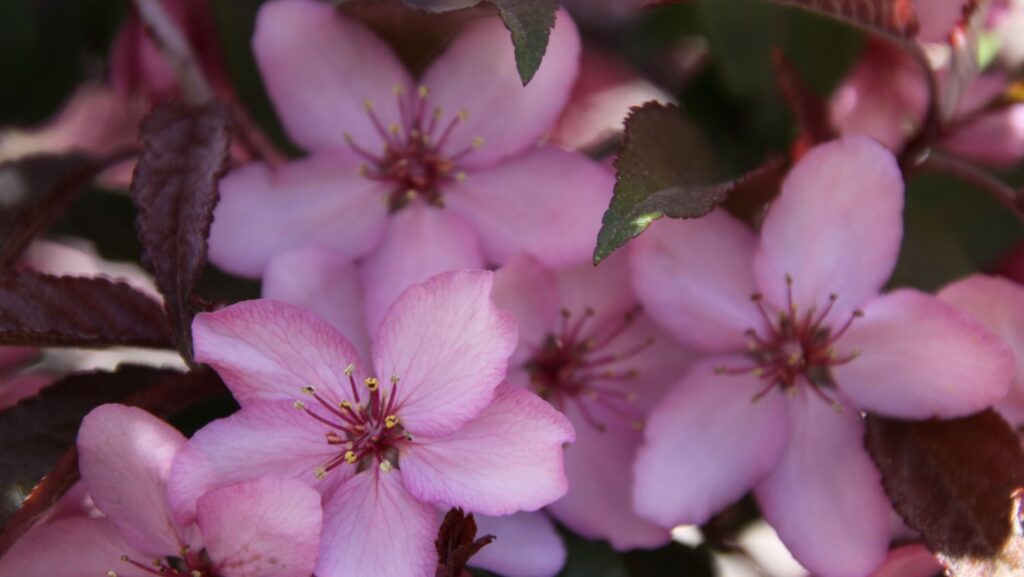
Flowering crabapple trees are versatile medium-sized ornamental trees that signal the arrival of spring. They typically bloom from late April to early June, depending on the variety and habitat. There are different types of blossoms: single, semi-double, and double, with single-flowered types usually blooming first. Weather conditions affect the exact timing of flowering each year, however, blooms typically lasts two to three weeks. The blooms range in color from white to various shades of pink and even carmine. The early swelling buds display attractive colors even before they bloom, providing prolonged spring interest.
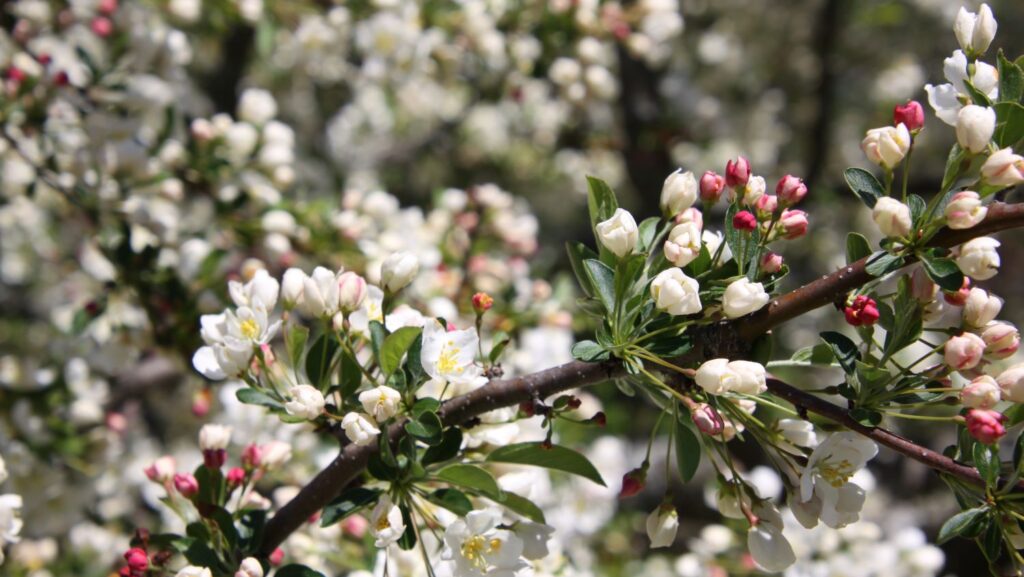
Crabapple trees are closely related to apple trees ( also Malus spp.) but they produce much smaller fruit (2 inches or less), distinguishing them from apples. There are approximately 1,000 known varieties, with many having vibrant fruit (ranging in color from red to yellow to orange) and flowers that add ornamental value to landscapes. Some varieties have been bred to prioritize fruit over flowers. Some varieties drop fruit in fall while others persist into winter adding some color to a snowy landscape and also serving as a food source for birds. Crabapples exhibit different foliage colors ranging from light to dark green, including shades of purple, and have leaves with diverse shapes including serrate, lobed, and incised. Some varieties also boast colorful fall foliage and attractive textural bark making the genus a popular choice with year-round interest.
They are relatively low maintenance plants offering various growth habits like vase-shaped, rounded, spreading, columnar, and upright-oval. They are also fairly drought tolerant and hardy between USDA zones 4–8. Crabapples flower and fruit best in full sun but can tolerate light shade. Pruning can be done before flowering in late winter/early spring or after blooming in early summer. Also, be sure to research crabapple varieties and cultivars that have been selected for disease resistance (rust, leaf spot, fireblight, scab, and powdery mildew can often be an issue) before choosing trees for your landscape.
Be sure to take a stroll around the Arboretum during the coming weeks to observe the crabapple blooms in all their glory! You can also type “Crabapple” into the “Common Name” search box on the Arboretum’s Interactive Plant Finder Map to find crabapple locations in the gardens. There are over 20 specimens comprising 11 different varieties to enjoy, with plantings focused around the Strolling Gardens and the Event Lawn.



